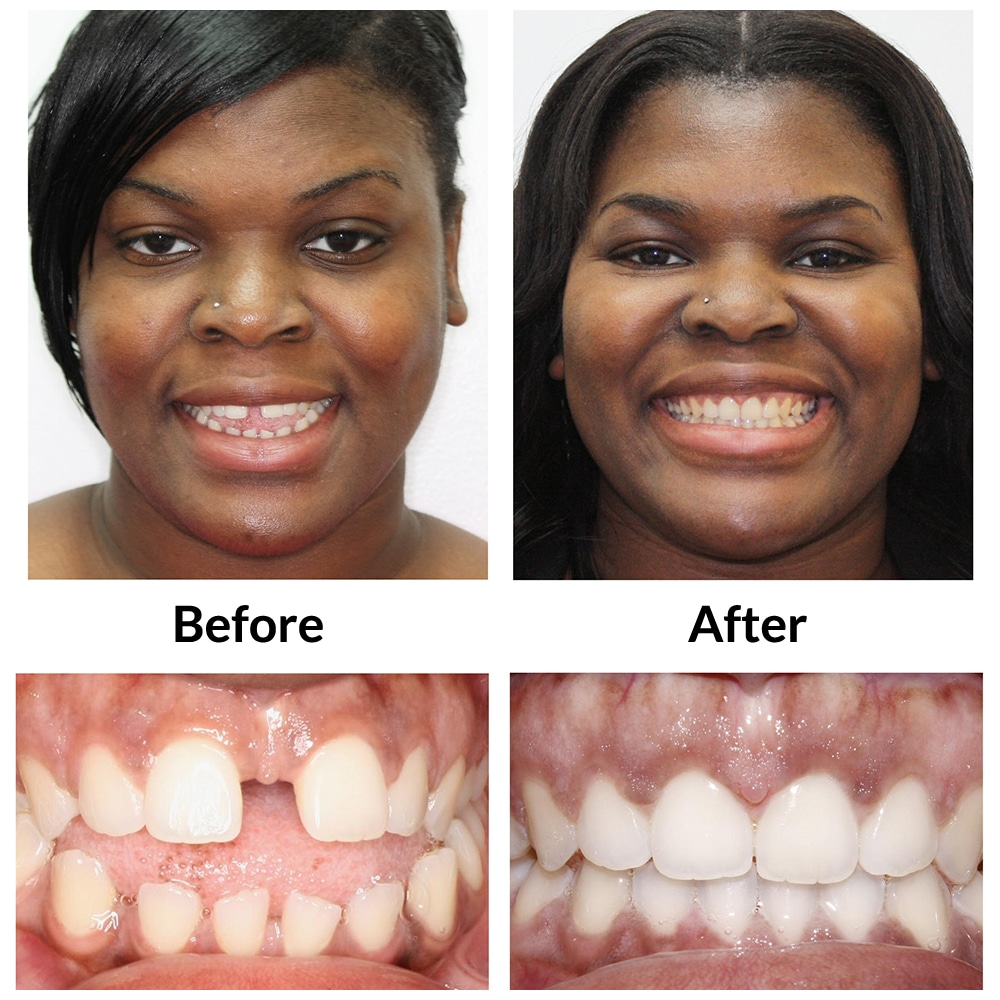The Price of Invisalign: Comprehending the Investment in Your Smile
Invisalign vs. Traditional Braces: Which Option Is Right for You?
When thinking about orthodontic treatment, the choice between Invisalign and standard dental braces offers several important aspects that merit cautious examination. Invisalign uses a discreet choice with detachable aligners, while conventional braces offer a much more noticeable yet efficient option for severe imbalance. Each option encompasses distinctive benefits and downsides connected to appearances, comfort, treatment period, and cost. Comprehending these nuances is crucial for making a notified decision that straightens with your individual choices and way of life. The concern stays: which alternative will ideal fulfill your orthodontic needs and assumptions?
Introduction of Therapy Alternatives

In comparison, conventional dental braces are composed of metal braces and wires that are adhered to the teeth. This method uses constant stress with time to achieve alignment. While effective for complex orthodontic concerns, conventional braces call for routine visits for modifications and can position challenges in keeping oral hygiene due to the problem of cleaning up about brackets and cables.
Both alternatives have their merits, and the selection frequently pivots on specific dental problems, lifestyle choices, and person compliance. Ultimately, speaking with an orthodontic specialist is critical for figuring out one of the most appropriate therapy plan tailored to private requirements. Understanding the subtleties of each alternative can dramatically influence the overall success of orthodontic therapy.
Aesthetic Factors To Consider
A significant aspect influencing the selection between Invisalign and standard braces is the aesthetic charm each therapy supplies. Invisalign aligners are crafted from clear plastic, making them basically unseen when worn. This discreet look is especially appealing to adults and young adults that might really feel self-conscious about their orthodontic therapy. The capability to keep a natural smile throughout the positioning procedure can significantly enhance the person's self-confidence in social and expert setups.
In comparison, standard braces include metal brackets and cables, which can be more recognizable. While improvements in orthodontic technology have actually brought about the advancement of smaller brackets and colored elastics, conventional dental braces still preserve a more noticeable profile. For some people, the presence of braces might prevent them from seeking needed therapy.
Inevitably, the selection in between Invisalign and conventional dental braces might rest on individual choices regarding visual appeals. Individuals that focus on discernment frequently favor Invisalign, while those who are less worried concerning visibility may go with standard braces. Recognizing the aesthetic effects of each alternative is critical for making an educated choice that lines up with one's way of living and preferences.
Comfort and Convenience

In regards to comfort, Invisalign aligners are removable, making it possible for individuals to enjoy their favorite foods without limitation and keep see here optimum oral health. Cleaning and flossing are simplified, as the aligners can be gotten during these routines, whereas conventional dental braces call for cautious navigating around braces and wires.
Additionally, Invisalign's modern system enables less orthodontic sees. Clients generally obtain numerous collections of aligners at the same time, which can streamline the treatment procedure and decrease time spent in the orthodontist's chair. In comparison, typical dental braces necessitate routine modifications, making them much less practical for those with hectic timetables. Invisalign. Generally, the comfort and comfort of Invisalign make it an attractive option for several people seeking orthodontic therapy.
Therapy Duration and Performance
While both Invisalign and conventional braces work in fixing oral imbalances, the duration of therapy can differ considerably between both alternatives. Generally, Invisalign therapy can take anywhere from 12 to 18 months, depending upon the complexity of the instance. The clear aligners work by progressively shifting teeth right into their desired placements, and normal follow-ups with an orthodontist aid make certain progress stays on the right track.
In contrast, standard braces commonly need a longer commitment, generally varying from 18 months to 3 years. This is because of their fixed nature and the use of wires and braces, which can be much more efficient for complex cases and extreme misalignments (Invisalign). The treatment effectiveness of typical braces is well-documented, as they permit for exact adjustments and higher control over tooth motion
Eventually, the option in between Invisalign and standard dental braces might depend upon both the expected treatment period and the specific oral issues handy. Consulting with an orthodontist is vital, as they can provide customized recommendations based on specific demands, ensuring the chosen technique lines up with wanted end results and timeframes.
Cost Contrast and Insurance Policy Options
Expense plays a significant function in the decision-making procedure for people thinking about orthodontic therapy, whether going with Invisalign or standard dental braces. On standard, the expense of Invisalign arrays from $3,000 to $8,000, while standard dental braces typically cost site here in between $2,000 and $6,000. Factors affecting these prices consist of the intricacy of the instance, the period of therapy, and geographical location.
Insurance policy protection can considerably influence out-of-pocket costs. Lots of oral insurance strategies supply partial coverage for orthodontic therapies, yet the specifics can vary commonly. It is critical for clients to examine their insurance plan to determine the extent of insurance coverage for either alternative. Usually, traditional braces may be much more regularly covered by insurance strategies contrasted to Invisalign, which some insurance providers categorize as a cosmetic treatment.
Furthermore, several orthodontic techniques supply versatile layaway plan, making both treatment alternatives much more obtainable. People should read inquire about potential funding options and discount rates for in advance payments. Reviewing the complete price, including insurance policy benefits and repayment strategies, is necessary for making an informed decision that straightens with both visual preferences and budget plan factors to consider.

Verdict
In recap, the option in between Invisalign and conventional dental braces pivots on numerous elements, consisting of aesthetic choices, comfort, treatment period, and cost. Invisalign supplies a very discreet, detachable alternative that facilitates dental hygiene and nutritional flexibility, while typical braces might be better for complex dental issues and often come with a lower cost point. Ultimately, consultation with an orthodontist is essential to analyze private scenarios and establish one of the most proper treatment option for attaining optimal oral alignment.
When considering orthodontic treatment, the selection between Invisalign and conventional dental braces offers numerous vital aspects that merit mindful examination.Comparing Invisalign and conventional braces discloses distinctive therapy options for orthodontic modification.While both Invisalign and conventional dental braces are reliable in remedying oral imbalances, the duration of treatment can differ significantly between the two choices.Expense plays a substantial duty in the decision-making process for people thinking about orthodontic treatment, whether opting for Invisalign or traditional dental braces.In recap, the choice in between Invisalign and typical braces pivots on multiple aspects, including visual choices, comfort, therapy period, and price.